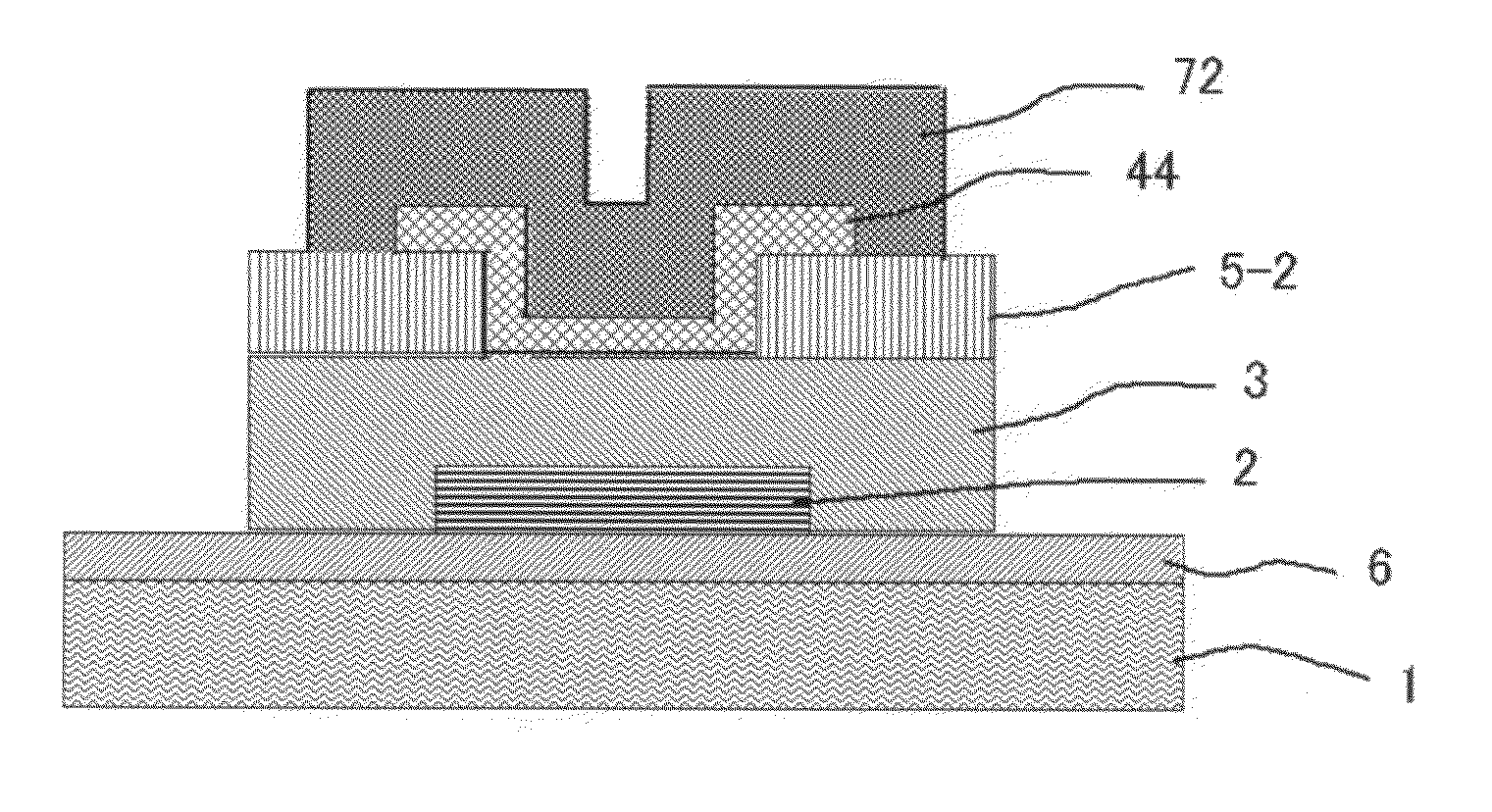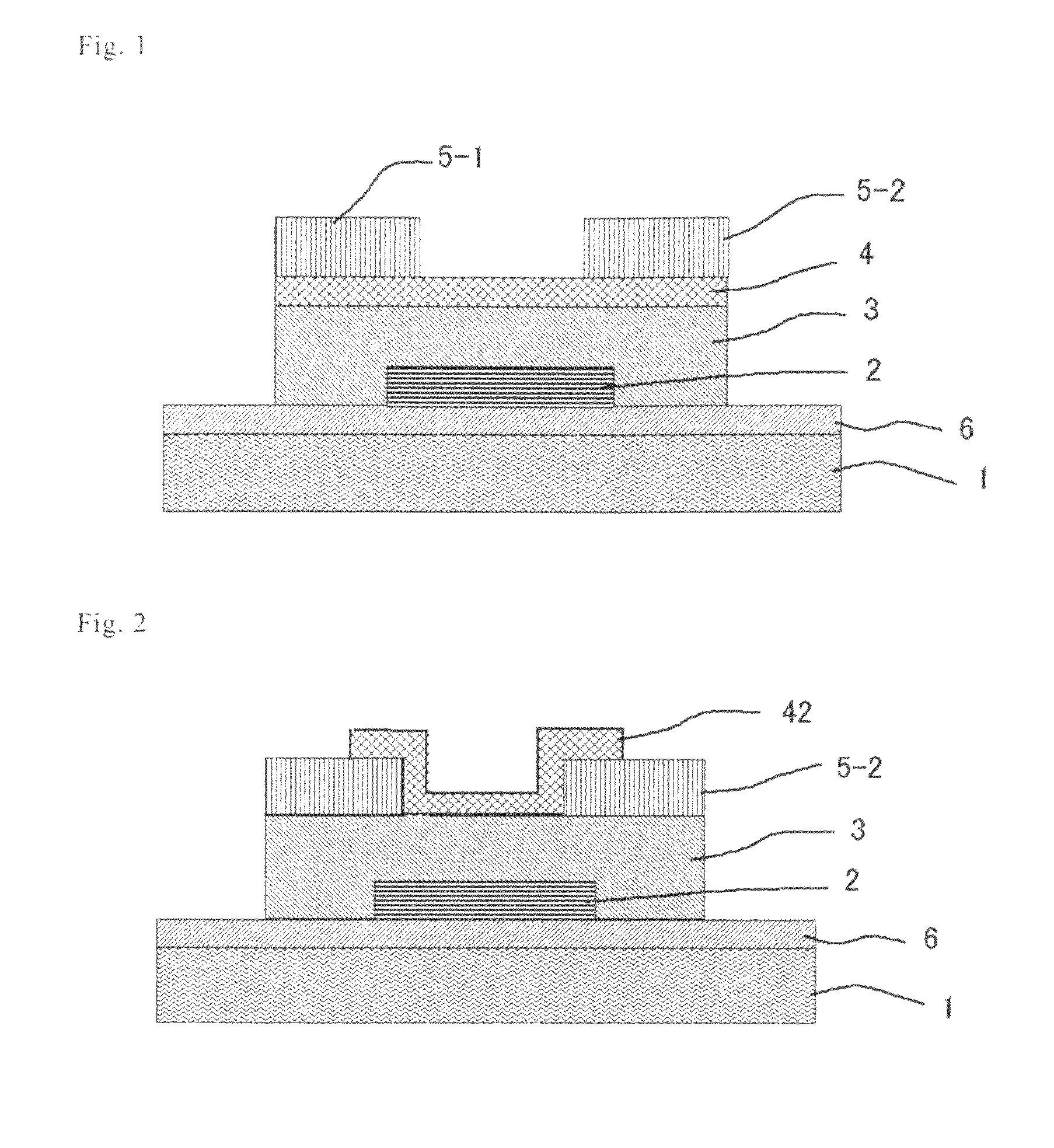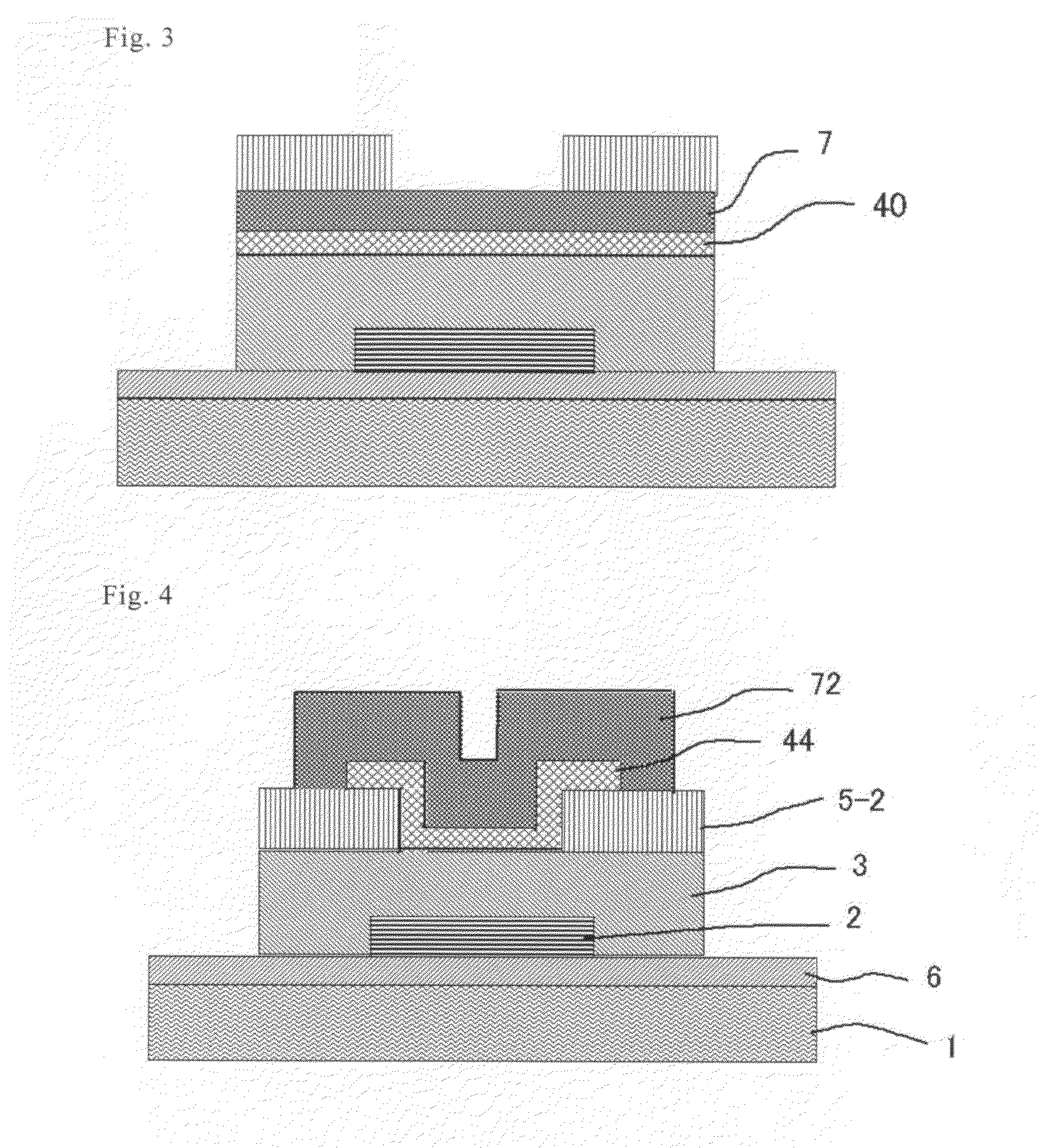Thin film field effect transistor with amorphous oxide active layer and display using the same
a technology of amorphous oxide and active layer, which is applied in the direction of basic electric elements, electrical apparatus, semiconductor devices, etc., can solve the problems of poor heat resistance, low heat resistance, and difficulty in forming transistors directly on resin substrates
- Summary
- Abstract
- Description
- Claims
- Application Information
AI Technical Summary
Benefits of technology
Problems solved by technology
Method used
Image
Examples
example 1
1. Preparation of Active Layer
[0257](Preparation of IGZO Semiconductor Having Different Carrier Concentration)
[0258]
[0259]Using a polycrystalline sintered body having a composition of InGaZnO4 as a target, RF magnetron sputtering vacuum deposition was performed under the following conditions: flow rate of argon (Ar) of 96 sccm, flow rate of oxygen (O2) of 1.7 sccm, RF power of 200 W, and total pressure of 0.4 Pa.
[0260]
[0261]Deposition was performed under similar conditions to those in the Condition 1 except that the flow rate of O2 was changed to 0.8 sccm.
[0262]
[0263]Deposition was performed under similar conditions to those in the Condition 1 except that the flow rate of O2 was changed to 0.6 sccm.
[0264](Preparation of IZO Semiconductor Having Different Carrier Concentration)
[0265]
[0266]Using a sintered body having a composition of In2O3: 10% by weight of ZnO (manufactured by Idemitsu Kosan Co., Ltd.) as a target, RF magnetron sputtering vacuum deposition was performed under the fo...
example 2
[0312]A TFT element was prepared in a similar manner to that in Example 1, except that a barrier-attached film including an insulating layer having a function for barrier described below on both sides of a polyethylene naphthalate film (having a thickness of 100 μm) was used instead of the non-alkali glass substrate in Example 1.
[0313]Insulating layer: SiON was deposited to give a thickness of 500 nm. For the deposition of SiON, an RF magnetron sputtering deposition method (conditions for sputtering: target of Si3N4, RF power of 400 W, flow rates of gas Ar / O2 of 12 sccm / 3 sccm, and film-forming pressure of 0.45 Pa) was applied.
[0314]The obtained element was evaluated in a similar manner to that in Example 1. As a result, the element exhibited unexpectedly extremely low hysteresis and low OFF current, and showed excellent performance suitable for driving an organic EL display, similar to the results in Example 1.
example 3
1. Preparation of Organic EL Display
[0315](Preparation of Organic EL Element Part)
[0316]1) Formation of Lower Electrode
[0317]As a substrate, a barrier-attached film including an insulating layer having a function for barrier on both sides of a polyethylene naphthalate film was used. On the substrate, indium-tin oxide (which is referred to hereinafter as ITO) was deposited at a thickness of 150 nm to form an anode.
[0318]2) Formation of Organic Layer
[0319]After cleaning, a hole injection layer, a hole transport layer, a light-emitting layer, a hole blocking layer, an electron transport layer and an electron injection layer were disposed in this order.
[0320]The composition of each layer is as follows. Each layer was provided by resistance heating vacuum deposition.
[0321]Hole injection layer: a layer containing 4,4′,4″-tris(2-naphthylphenylamino)triphenylamine (which is referred to as 2-TNATA) and 2,3,5,6-tetrafluoro-7,7,8,8-tetracyanoquinodimethane (which is referred to as F4-TCNQ), wh...
PUM
 Login to View More
Login to View More Abstract
Description
Claims
Application Information
 Login to View More
Login to View More - R&D
- Intellectual Property
- Life Sciences
- Materials
- Tech Scout
- Unparalleled Data Quality
- Higher Quality Content
- 60% Fewer Hallucinations
Browse by: Latest US Patents, China's latest patents, Technical Efficacy Thesaurus, Application Domain, Technology Topic, Popular Technical Reports.
© 2025 PatSnap. All rights reserved.Legal|Privacy policy|Modern Slavery Act Transparency Statement|Sitemap|About US| Contact US: help@patsnap.com



